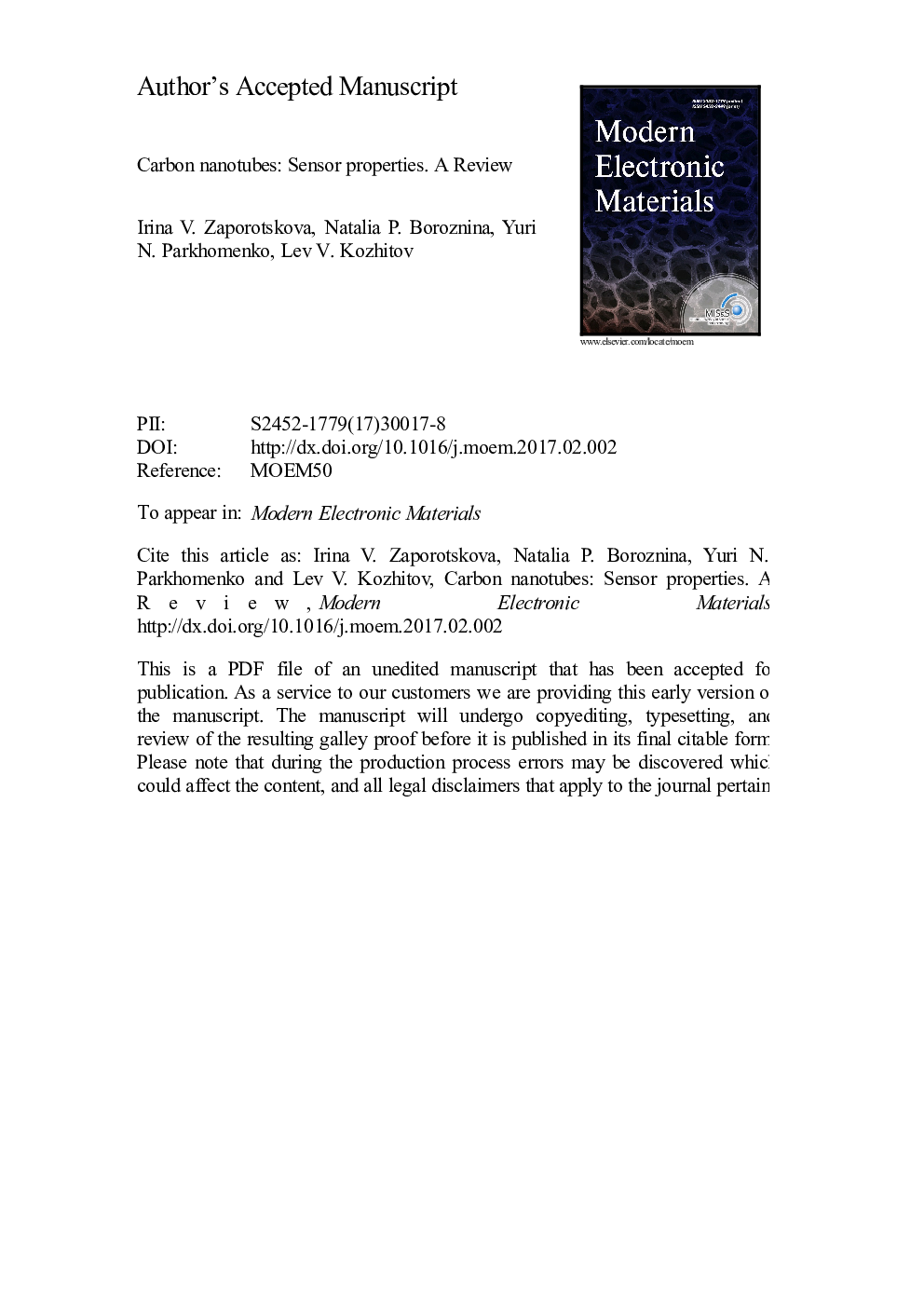| Article ID | Journal | Published Year | Pages | File Type |
|---|---|---|---|---|
| 7924439 | Modern Electronic Materials | 2016 | 38 Pages |
Abstract
Recent publications dealing with dealing with the fabrication of gas and electrochemical biosensors based on carbon nanotubes have been reviewed. Experimental and theoretical data on the working principles of nanotubes have been presented. The main regularities of the structure, energy parameters and sensor properties of modified semiconducting systems on the basis of cabon nanotubes have been studied by analyzing the mechanisms of nanotubule interaction with functional groups (including carboxyl and amino groups), metallic nanoparticles and polymers leading to the formation of chemically active sensors. The possibility of using boundary modified nanotubes for the identification of metals has been discussed. Simulation results have been reported for the interaction of nanotubes boundary modified by -СÐÐÐ and -NH2 groups with atoms and ions of potassium, sodium and lithium. The simulation has been carried out using the molecular cluster model and the MNDO and DFT calculation methods. Sensors fabricated using this technology will find wide application for the detection of metallic atoms and their ions included in salts and alkali.
Related Topics
Physical Sciences and Engineering
Materials Science
Electronic, Optical and Magnetic Materials
Authors
Irina V. Zaporotskova, Natalia P. Boroznina, Yuri N. Parkhomenko, Lev V. Kozhitov,
